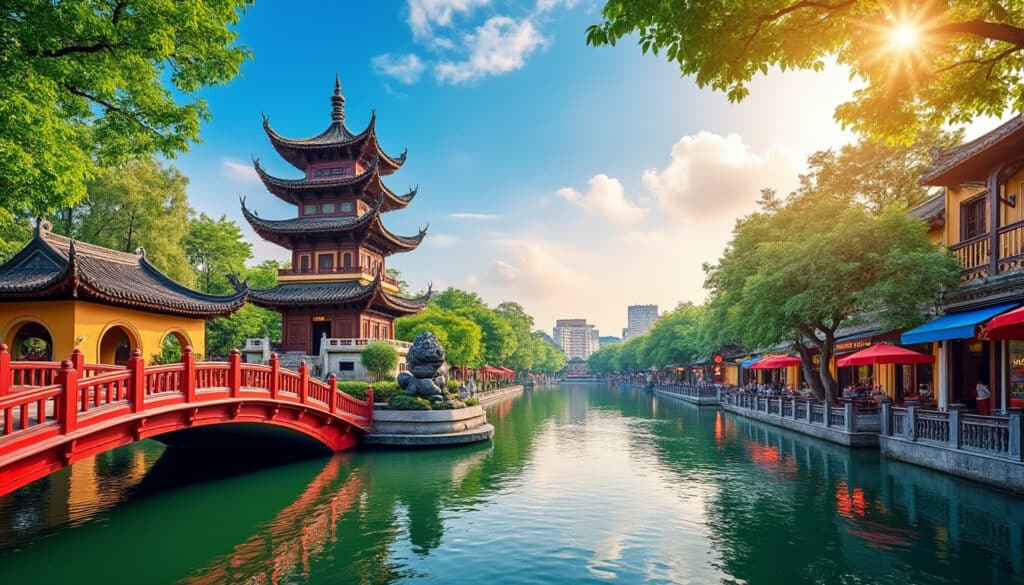Hanoi, the vibrant capital of Vietnam, is a melting pot of cultures, histories, and languages. It’s not just a city known for its charming architecture or vibrant street life, but also for its linguistic diversity that reflects its historical tapestry. From its tonal Vietnamese language that carries hints of Chinese influence to the remnants of French colonialism, the language and spelling in Hanoi offer a unique perspective into its rich cultural heritage. Understanding these nuances not only enhances the travel experience but also deepens appreciation for Hanoi’s diverse community.
Understanding the Vietnamese Language in Hanoi
The Vietnamese language, or Tiếng Việt, is the official language and is predominantly spoken by Hanoians. As a tonal language, Vietnamese comprises six distinct tones, each altering the meaning of a word. This feature can often intrigue linguistics enthusiasts or perplex travelers trying to grasp the basic greetings during their Hanoi journey.
Written in Latin script, Vietnamese employs diacritical marks to represent its tones and phonetic elements. These marks are critical for accurate pronunciation and meaning. They are an indelible part of Hanoi’s linguistic landscape, peppering street signs, menus, and educational materials.
For those exploring the city’s educational scene, understanding this linguistic structure is essential. Hanoi is home to numerous institutions that delve into Vietnamese language education, offering classes for both locals and international learners. As the demand for learning Vietnamese grows, so does the city’s reputation as an educational hub.
The language’s vocabulary is rich with loanwords from Chinese due to historical interactions and from French due to colonial past. As you stroll through the city’s French Quarter, this blend is evident in the names of streets and culinary delights, providing a fascinating glimpse into language evolution.

Challenges of Vietnamese Language for Travelers
Travelers may find navigating the linguistic intricacies of Vietnamese daunting, particularly because of its tonal nature. However, it’s this very characteristic that makes the language so enchanting to learn. Local guides and language schools offer excellent opportunities for visitors to engage with the language through immersive experiences.
Efforts to learn even a few basic phrases like “Hello” (Xin chào) or “Thank you” (Cảm ơn) can lead to enriched interactions and open up conversations with local residents, further immersing oneself in the Hanoi culture.
Learning Vietnamese can be a rewarding endeavor, paving the way for deeper Hanoi experiences. For many, it becomes a gateway to understanding not just words, but the stories and traditions they represent.
Influences of French Language in Hanoi
Hanoi, a city steeped in history, still carries echoes of French colonialism. The French language, while not as prevalent as before, remains a significant part of Hanoi’s identity. French influence can be observed in the architecture of the French Quarter and in the names of several iconic dishes and cafés that adorn the cityscape.
Many older Hanoians, who were educated in French colonial schools, maintain fluency in the language. This creates a unique dynamic where French, once an official language, finds its place among some of the elite and intellectual circles.
This relationship between Hanoi and French is further observed during special occasions like the Festival Hue, where French cultural contributions are celebrated, showcasing the enduring ties between the two lands.
Culinary Influence of French on Hanoi Cuisine
- 🍞 Bánh mì: A Vietnamese sandwich with French baguette origins.
- 🥖 Pâté: Often used in bánh mì, reflecting French culinary techniques.
- 🧀 Phô mai: Cheese, a less common ingredient in traditional Vietnamese cooking, introduced through French influence.
These elements are not only represented in language but are also woven into Hanoi’s culinary fabric. Such connections make the city a vibrant spot for gastronomes looking to taste history.
Emerging Language Trends in Hanoi: English and Asian Languages
In modern times, English is emerging as a vital communication tool in Hanoi, particularly with the younger generation and in touristic zones. As globalization continues to expand Hanoi tourism, English proficiency is increasingly valuable in the service industry, educational settings, and business sectors.
The internet and popular media significantly enhance English learning, with many younger Hanoians embracing it as a window to the world. Educational institutions offer vast resources and programs dedicated to English language acquisition, which have become stepping stones for students aspiring to global opportunities.
Besides English, Korean and Japanese have witnessed a rise in popularity. Fueled by K-pop, J-dramas, and the cultural exchange between Vietnam and its Asian neighbors, language schools offering courses in Korean and Japanese have mushroomed across the city.
These linguistic trends reflect a dynamic city constantly evolving and adopting new cultural influences. The fusion of these languages within Hanoi showcases its adaptability and openness to global integration, making it a fascinating study for language and culture enthusiasts.
Language in Technology and Education
Educational institutions in Hanoi leverage technology to advance language studies. Online platforms and apps have made significant strides, offering interactive experiences for language learners. This technological integration is particularly beneficial for those wishing to grasp the complexities of Vietnamese or enhance their English proficiency.
The adaptation of digital tools has made Hanoi a forerunner in modern education, providing accessible learning opportunities to a broad audience.
Exploring Minority Languages in Hanoi
Hanoi’s linguistic diversity extends beyond Vietnamese and its colonial past. The city is also home to minority languages that constitute an essential part of Vietnam’s rich tapestry. These include languages like Hmong, Thai, and Khmer spoken by ethnic communities residing in Hanoi.
Understanding these languages offers insights into Hanoi’s demographic and cultural complexity. Each language carries unique traditions and cultural histories, contributing to Hanoi’s rich narrative.
For example, the Hmong language, spoken by the Hmong people, forms part of the socio-cultural fabric that paints a fuller picture of Hanoi’s multi-ethnic community.
- 🌾 Hmong: Found predominantly in the northern highlands.
- 🏞️ Thai: Another significant language reflecting Vietnam’s cultural diversity.
- 🗺️ Khmer: Connected to the Vietnamese in the southern region, yet reflects in Hanoi’s linguistic mix.
The Evolution of Language and Spelling in Hanoi
The evolution of language and spelling in Hanoi portrays the city’s dynamic character. Spelling conventions in Vietnamese have experienced modifications with modernization and the influence of foreign cultures. These adjustments are observed in transliterations of names and the adaptation of foreign terms into Vietnamese lexicon.
Vietnamese names of places and people have incorporated phonetic spellings to accommodate simplification, widely utilized in travel guides and maps. This usage not only aids tourists but also reflects Hanoi’s blend of tradition and modernity.
As Hanoi undergoes rapid urbanization and development, the interplay between linguistic history and future prospects remains a compelling narrative that shapes Hanoi experiences today.
Frequently Asked Questions
| ❓ Question | 🔍 Answer |
|---|---|
| Which languages are most commonly spoken in Hanoi? | The most common languages are Vietnamese, English, French, and emerging trends in Korean and Japanese. |
| Is English widely spoken in Hanoi? | English is spoken mainly in tourist areas and among younger generations, especially those with educational backgrounds in the language. |
| How important is it to learn Vietnamese for travelers? | While not essential, learning basic Vietnamese enhances interactions and shows respect for local culture. |
| What are the implications of French influence in Hanoi? | French influences are visible in architecture, language, and cuisine, all key to understanding Hanoi’s cultural heritage. |
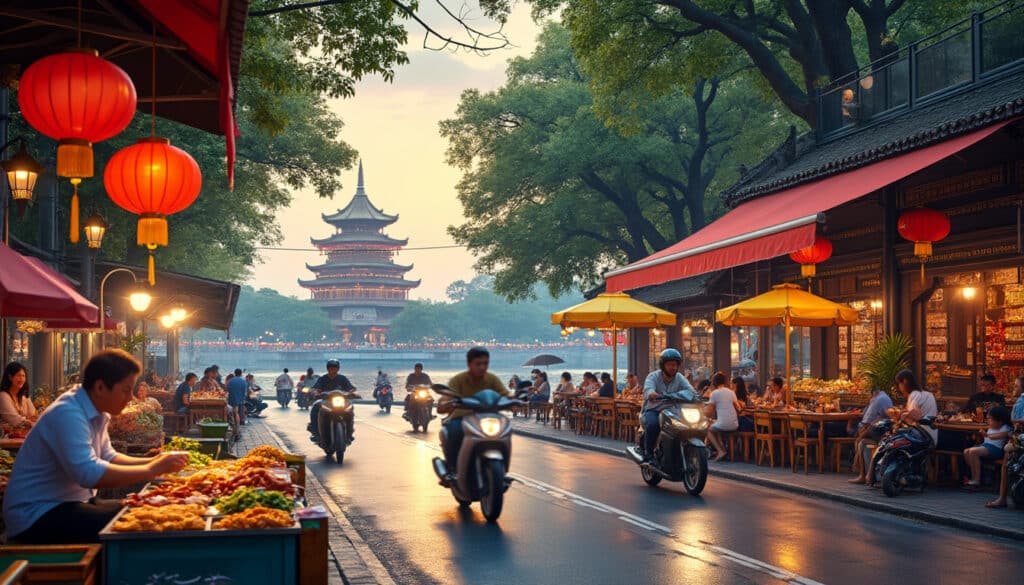
Fun Facts & Curiosities About Hanoi
Hanoi, the vibrant capital of Vietnam, is a fascinating mix of rich history, unique traditions, and modern progression. From its celebrated street food scene to the captivating water puppet shows, Hanoi is both a city of lakes and legends. Visitors…
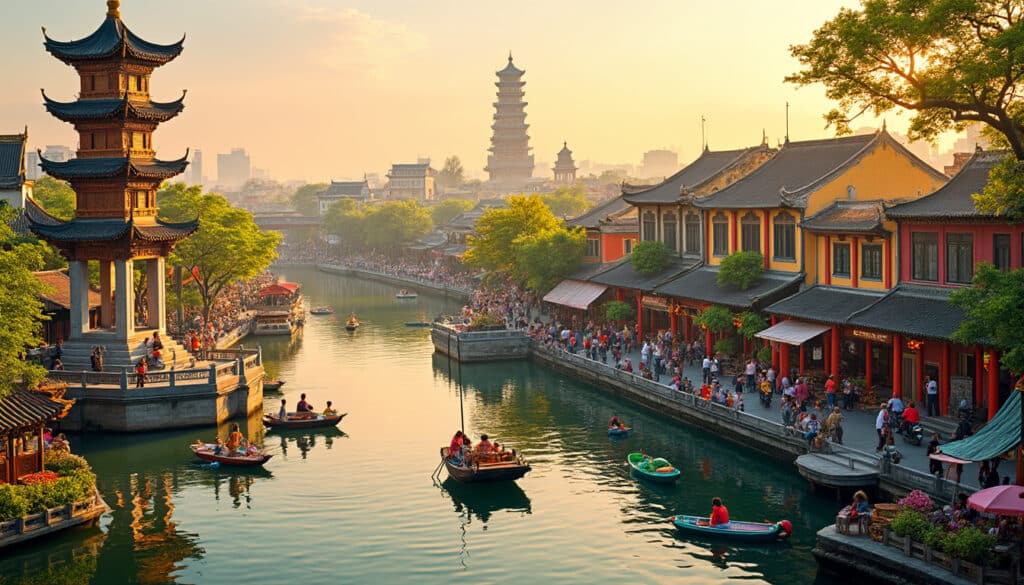
Architecture and urban features of Hanoi
With a rich tapestry of cultures and historical evolution, Hanoi stands as a captivating testament to Vietnam’s architectural diversity. This city’s allure doesn’t just lie in its remarkable history but in its unique blend of oriental and French-style architecture that…
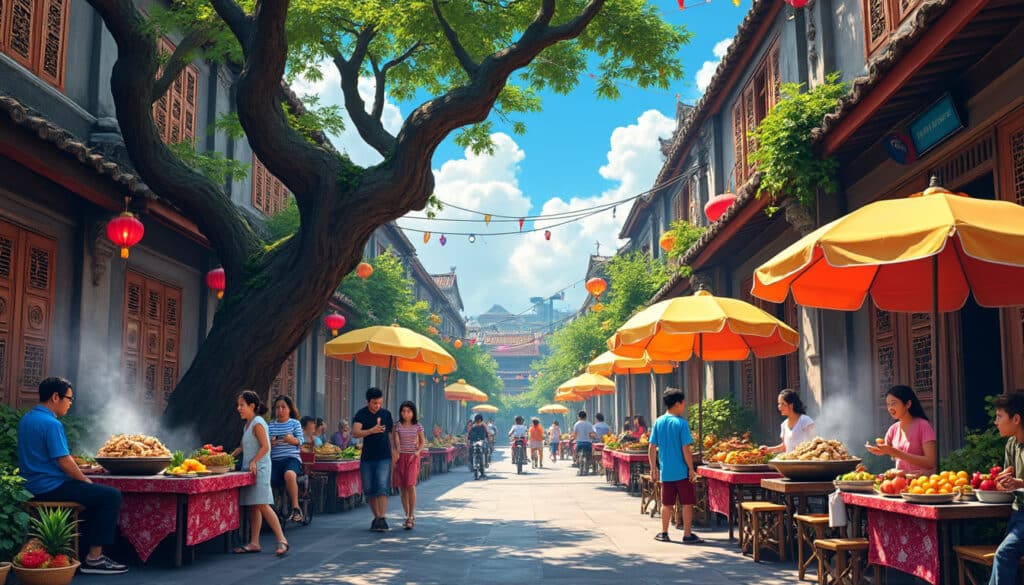
Experience the daily life in Hanoi, a city brimming with vibrant charm and historical depth. As you navigate through the bustling streets, the harmonious blend of the old and new reveals itself in every corner. From savoring delectable street food…
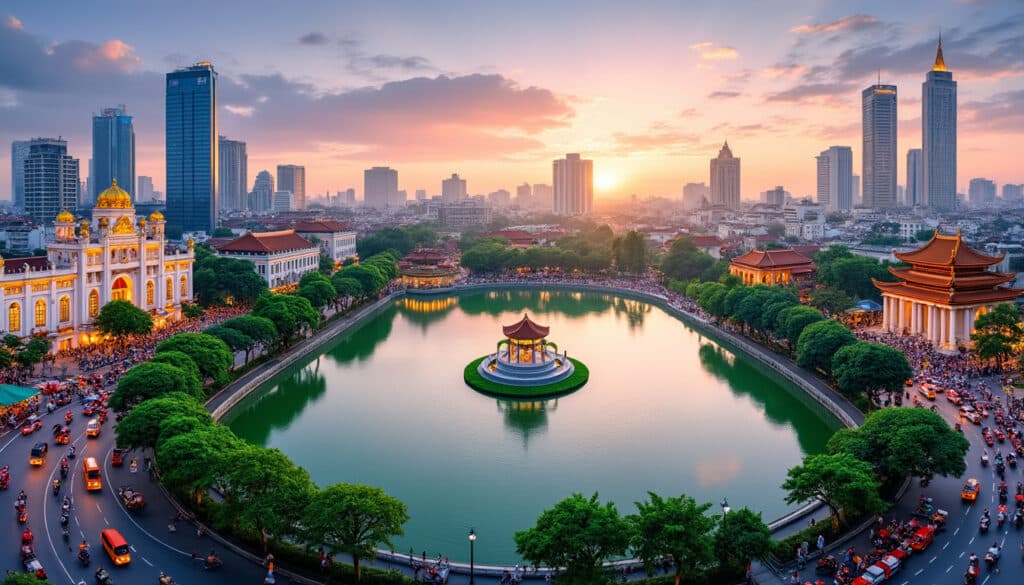
Demographics and geography of Hanoi
The vibrant city of Hanoi, the capital of Vietnam, is not just the political heart but also a pulsating hub of culture, history, and modernity. With a rich tapestry of over a thousand years of evolution, the city has seen…

Holidays and celebrations in Hanoi
Hanoi, the pulsating heart of Vietnam, offers a tapestry of vibrant festivals and celebrations that reflect its rich cultural heritage and traditions. Throughout the year, local and international visitors witness an enchanting blend of the past and present, as the…

Local tips for tourists in Hanoi
Exploring Hanoi, Vietnam’s thousand-year-old capital, is a journey into a world where ancient traditions and modern dynamism converge. With its rich cultural heritage, vibrant street life, and aromatic cuisine, Hanoi captivates every traveler. Yet, navigating this bustling city can be…

Names, flags, and identity of Hanoi
In the heart of Vietnam, Hanoi stands as a testament to the cultural and historical richness that has evolved over millennia. The names, flags, and identity of this vibrant city are not just labels or symbols, but threads woven into…

Reputation and identity of Hanoi
As the capital city of Vietnam, Hanoi’s reputation and identity intertwine richly with its historical and cultural legacies. Emblematic for its historic architecture, street food, and melodious water puppet shows, the city pulsates with the quintessential Vietnamese spirit. From its…

As the vibrant capital of Vietnam, Hanoi is a city that offers an intriguing blend of history, modernity, and cultural diversity. Understanding the rhythm of this bustling metropolis goes beyond its rich traditions and lively street scenes. The way time…

Unusual facts and social issues in Hanoi
Hanoi, the bustling capital of Vietnam, is a city that fuses ancient traditions with rapid modernity. Known for its rich cultural heritage, Hanoi’s unique blend of history and progression offers a fascinating backdrop for unusual facts and social dynamics that…
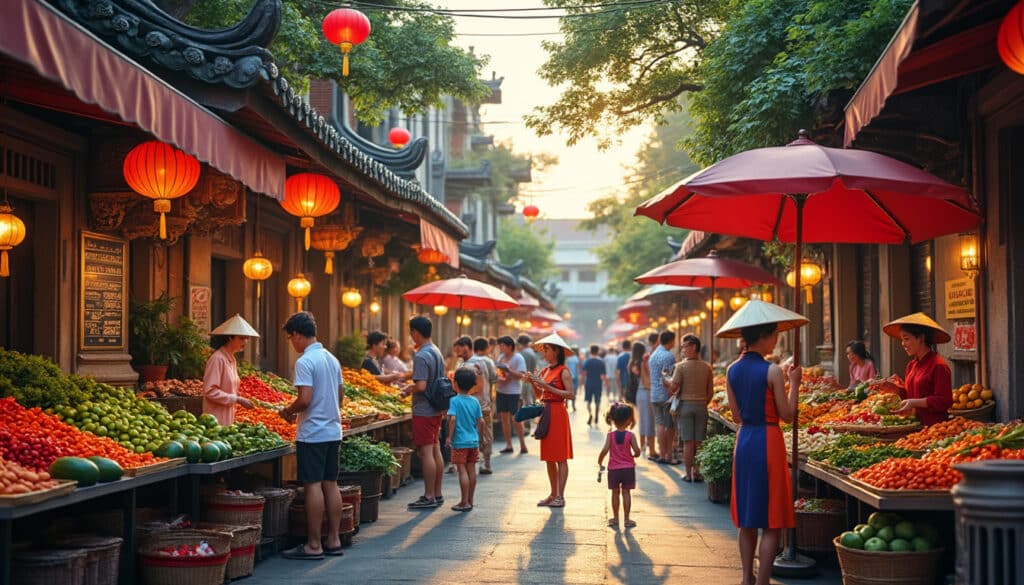
What does Hanoi look, smell, feel like?
Experiencing Hanoi is like stepping into a symphony of vibrant images, lively sounds, and delightful scents. Nestled between historic roots and modern hustle, Vietnam’s capital offers a unique sensory journey. Whether you’re wandering through the alleys brimming with local art…



